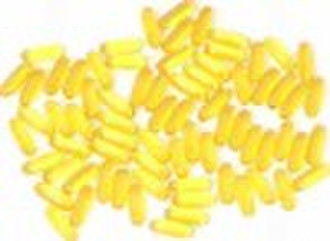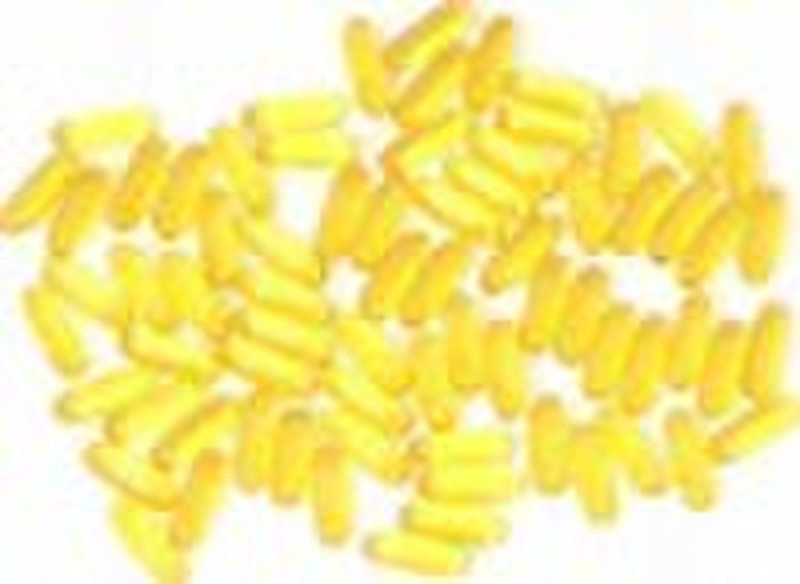Каталог
-
Каталог
- Автомобили и мотоциклы
- Безопасность и защита
- Бизнес
- Бытовая техника
- Бытовая электроника
- Детали машин и услуги по их изготовлению
- Дом и Сад
- Здоровье и медицина
- Игрушки и хобби
- Изделия из металла
- Измерительные и анализирующие приборы и инструменты
- Инструмент
- Красота и личная гигиена
- Мебель
- Мероприятия по охране окружающей среды
- Минералы и металлургия
- Модные аксессуары
- Обувь и аксессуары
- Одежда
- Освещение
- Подарки, сувениры
- Продовольственные товары и напитки
- Промышленное оборудование и техника
- Резина и пластмассы
- Сельское хозяйство
- Специальное оборудование
- Спорт, отдых и досуг
- Сток
- Строительство и недвижимость
- Текстиль и кожа
- Телекоммуникации
- Товары для офиса, учебы. Канцтовары
- Транспорт
- Упаковка и печать
- Химикаты
- Часы, Украшения, Очки
- Чемоданы, сумки
- Электронные компоненты, оборудование, принадлежности
- Электротехническое оборудование и принадлежности
- Энергия
Filters
Search
Витамин К2 (20), МК-4
ориг. цена: 15,00 USD
Шанхай, Китай

Emma hu
Контактное лицо
Основные данные
Synonym: Vitamin K2, Vitamin MK4,menaquinone, menaquinon-4, menatetrenone, menatetren, menatetrenona, menatetrenonum, 2-methyl-3-[(2'E,6'E,10'E)-3',7',11',15' -tetramethylhexadeca-2',6',10',14'- tetraen-1'-yl]-1,4-naphthalenedione; CAS Number: 863-61-6 or 11032-49-8 Molecular Formula: C31H40O2 Molecular Weight: 444.65 Vitamin K2 is essential for the carboxylation of glutamate residues in certain proteins, to give -carboxyglutamate. This modification allows the protein to bind calcium, an essential event in the blood clotting cascade. Carboxylation of glutamate is also important in other proteins involved in the mobilization or transport of calcium. Vitamin K2 is also a known activator of SXR. Currently in Japan, Vitamin K2 is being used to treat the degenerative bone disease osteoporosis. 1. Dual function of bone-Reabsorption prevention and Osteoblast-Promoting : VK2 promotes the formation of Osteocalcin, increases the density of bones and reduces bone loss. Its a new medicine to cure and prevent osteoporosis and fracture. 2. Curing haemorrhage caused by VK2 deficiency: VK2 promotes the formation of thrombin, accelerates blood clotting, accelerates and maintains proper clotting time. 3. Preventing and retarding calsification of blood vessels, preventing arteriosclerosis caused by calsification. 4. VK2 can be used as a PKA active regulator to promote the detoxifcation of liver, prevent and cure hepatic fibrosis, Liver Cancer and Lung Cancer. 5. Vitamin K2 derived from the fermented soy product natto has a higher bioavailability than vitamin K1. Specifications: 1. 0.1-0.5% in Oil, Food Grade ; 2. 0.1-0.5% powder(sustained released preparation), Food Grade ; 3. 1.3% in Oil, Food Grade ; 4. 1.3% powder(sustained released preparation), Food Grade ' 5. >98.0% Powder, JP14 Grade ; 6. >98.0,oil,JP14 Grade Reference: Stimulatory effect of menaquinone-7 on bone formation in elderly female rat femoral tissues in vitro: Prevention of bone deterioration with aging VITAMIN K2 (MENAQUINONE) A second vitamin K (vit K2) was isolated very early from putrified fish meal as a product of microbial synthesis (McRee et al., J. Am. Chem. Soc. 1939, 61, 1295). It has the same absorption peaks in UV region as vit K1 but with a slightly lower intensity (molar abs. coeff. at 248 nm: 11800). Vitamin K2 has a poly-isoprenoid unsaturated side-chain of various length, with isoprene units varying from 4 to 13. These compounds are called menaquinones-n or MK-n. As an example of the various menaquinone forms, MK-7 has 6+1=7 isoprenoid units or 35 carbons in the side chain and can be called vitamin K2(35) or menaquinone-7. This could be called also 2-methyl-3-all-trans-farnesyl digeranyl-1,4-naphthoquinone. Farnesol and geraniol are the alcohols with 3 (15 carbons) and 2 (10 carbons) isoprenoid units, respectively. One of the first menaquinones discovered was MK-6 (Isler, 1958) which can be called 2-methyl-difarnesyl-1,4-naphthoquinone. Most menaquinone-containing organisms contain a series of menaquinones, the major homologs with n=6 to 9 constituting about 90% of the total. Among human foods, dairy products are particularly rich in menaquinone species. As an example, a common cheese (Camembert) contains about 40 ng/g of vitamin K1 but about 600 ng/g of menaquinones (less than 2% MK5, MK6 and MK7, 9% MK4, 27% MK8 and 62% MK9). It was shown by oral administration to vitamin K-deficient chicks that isoprenologs with 3 to 5 isoprenoid groups in either menaquinone or phylloquinone type compounds have maximum biological activity. Vitamin K In the early 1900's, research was conducted on the cause of pellagra. A US government investigator, Joseph Goldberger, took his study to a Jackson, Mississippi, orphanage, where many of the children had the disease. The symptoms disappeared when the children were fed high protein diets of meat, beans, and eggs. His conclusion was that pellagra was caused by a protein deficiency. By 1930, researchers had isolated the real cause of pellagra as that of niacin. It is now known that the body can produce the niacin it requires from the amino acid tryptophan, even such when foods as meat, beans, and eggs do not contain significant levels of niacin, thus explaining the reason pellagra improved with a protein diet. Using chickens, studies in the 1920"s and 30's in Denmark revealed that blood clotting was slow after certain restricted diets. Through further research, it was found that a special fat soluble vitamin was the cause. By 1940, Dr. Henrik Dam had isolated the vitamin and named it Vitamin K for "koagulationsvitamin," the Danish spelling for the vitamin responsible for clotting. There are three notable forms of Vitamin K, K1 (phytonadione/phylloquinone/phytonactone), K2 (menaquinones), which can be formed by natural bacteria in the intestines, and K3 (menadione), the most active synthetic form of the preparations K3-K7. Absorption of K1 is from the gut (duodenum and jejunum) via the lymphatic system. Conditions that impair lipid absorption will also impair the absorption of Vitamin K, especially antibiotics. In their effort to rid foreign bacteria, antibiotics destroy the normal intestinal flora needed for Vitamin K synthesis, causing a deficiency of the vitamin. Since it is produced in the intestines, it cannot qualify as an official vitamin. Excretion of absorbed Vitamin K occurs mainly in the feces (30-40%), but there is some excreted in the urine (15%) as well. Vitamin K has a common basic structure that acts as a cofactor for the enzymes essential for normal blood-clotting, namely, in forming the blood clotting chemical "prothrombin" (coagulation factor II). In the liver, Vitamin K plays an important role in the actions of other factors (VII, IX, X), along with proteins C, S, and Z, in addition to its role with prothrombin. Although these proteins are "synthetic," in the absence of K, they become inactive. In the presence of K, prothrombin is converted to thrombin, an active enzyme which, in turn, converts fibrogen to fibrin to form a blood clot. Vitamin K is most commonly known for its routine use for the newborn. A healthy newborn has low plasma prothrombin levels, but levels in premature infants may be inadequate to prevent hemorrhage. Newborns are customarily given 0.5-1.0 mg. of Vitamin K by injection. Preterm infants are given 1 mg. or more. If needed, the dose is repeated a week later. Phytonadione (K1) is an analogue of Vitamin K; but it has the quickest onset of action, the most prolonged duration, and is the most potent of all the Vitamin K forms. It is also safer than menadione (K3) to use on newborns. K3 is the only one that could cause toxicity, causing hemolytic anemia. Hemolytic anemia happens when the RBC's die more quickly than the body can reproduce. In addition, it speeds liver damage, producing jaundice, deafness, and severe neurological problems, including retardation in infants. There is no record that the other two forms have produced toxic levels. Care must be taken with IV injections of Vitamin K, since they can cause facial flushing, excessive perspirations, chest tightness, cyanosis, vascular collapse, and shock as well as anaphylaxis. The drug warfarin (Coumadin) is the most recognized medication that counteracts the effects of Vitamin K. On the other hand, Vitamin K does not reverse overdoses of the injectable anticoagulant, heparin. Trauma, physical dehabilitation, kidney failure, and prolonged use of broad spectrum antibiotics often cause a Vitamin K deficiency. Malabsorption syndromes also contribute deficiency for the same reason. Another reason for a Vitamin K deficiency is the excess intake of fat soluble vitamins (A, D, and E).
Условия поставки и упаковка
Packaging Detail: 100G,1Kg,2Kg,5Kg,25Kg Delivery Detail: within 7 days
Порт: Shanghai
Условия оплаты
Электронный перевод
MoneyGram
Вестерн Юнион
-
Способы оплаты
Для оплаты товаров и услуг на нашем портале, Вы всегда получаете счет, в котором Вам необходимо самостоятельно указать свои данные.
Мы принимаем к оплате:









